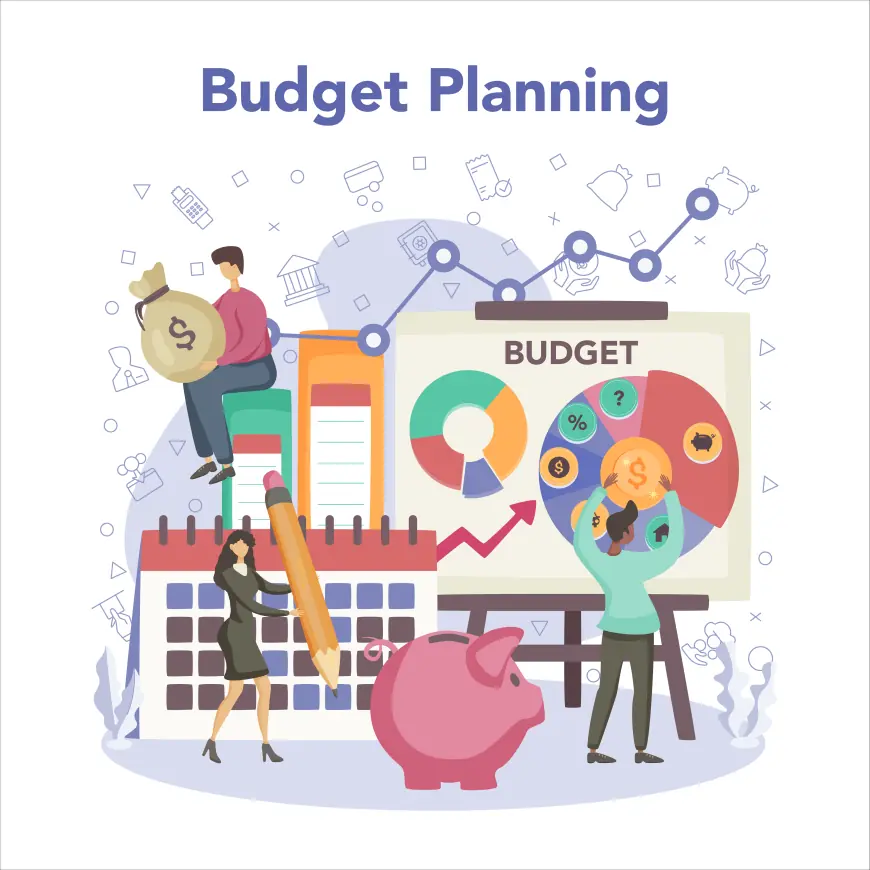Are You Overspending Without Realizing It? Here’s How to Tell
Are you overspending without even realizing it? Discover subtle signs of hidden spending, practical ways to track your habits, and how EMOH Pay can help you take control of your finances with real-time insights and smarter budgeting tools.

Do you ever find yourself wondering where your money went—despite not making any big purchases? You're not alone. Many people experience this quiet financial drain without even realizing it's happening. It's not the obvious splurges that usually create long-term financial issues—it's the small, routine, and unnoticed expenses that add up quickly.
In today’s fast-paced world of subscriptions, mobile payments, and impulse purchases, overspending can sneak into your life subtly. If you feel like your income should stretch further than it does, it might be time to take a closer look at how you're spending—and what you're not seeing.
Let’s explore how to identify hidden spending habits, the common signs of unnoticed overspending, and what you can do to take control of your finances.
What Is “Silent Overspending”?
Silent overspending refers to spending money regularly in small amounts that don’t feel significant on their own—but when combined, they become substantial. Because these expenses often feel like daily essentials or habits, we rarely question them. They go under the radar and silently disrupt our budgets.
Common examples include:
-
Multiple subscriptions you rarely use
-
Daily coffees or meals out
-
Frequent online orders
-
In-app purchases or premium upgrades
-
ATM or transaction fees
These aren’t bad purchases on their own—but when repeated frequently, they can easily account for hundreds of dollars a month.
5 Signs You’re Overspending Without Realizing It
1. You Struggle to Save Consistently
If saving feels impossible even though your income seems decent, it's a major red flag. Hidden spending may be eating away the funds you could be saving.
2. Your Credit Card Balance Keeps Growing
Using your credit card occasionally is fine—but if your balance never seems to go down or you’re paying just the minimum each month, you might be overspending in ways you don’t track.
3. You Don’t Know Your Monthly Expenses
If someone asked you how much you spent last month, could you answer accurately? Most people can’t—and that uncertainty is often a sign that spending isn’t being monitored closely.
4. You Feel Surprised by Your Bank Balance
Checking your balance and seeing a lower number than expected is one of the clearest signs that money is leaving your account without your full awareness.
5. You Don’t Budget—Or Your Budget Isn’t Updated
A static budget (or none at all) makes it easy for new habits or irregular expenses to slip in and cause financial strain.
How to Identify Where Your Money Is Going
The good news? You can uncover hidden spending patterns—and regain control. Start by taking three simple steps:
1. Track Every Transaction for One Month
Manually write them down or use a digital tool. You might be shocked at how many “small” purchases add up to a significant amount.
2. Categorize Your Expenses
Label your spending into categories such as food, shopping, entertainment, subscriptions, and transport. Seeing it broken down helps you pinpoint where overspending occurs.
3. Compare Spending to Your Budget (If You Have One)
If you don’t have a budget, this is a perfect time to start. Your expense data becomes the foundation for a realistic budget you can actually stick to.
How EMOH Pay Helps You Catch Hidden Spending
Manually tracking spending is helpful—but often time-consuming. That’s where EMOH Pay comes in, offering a smarter and faster way to uncover spending patterns you might be missing.
With EMOH Pay, you can:
-
Automatically sync your bank accounts and track every transaction.
-
Instantly categorize your spending (groceries, shopping, dining, etc.).
-
Set customized budgets for each category and receive alerts if you go over.
-
Create and follow savings goals based on real-time financial activity.
-
Get monthly reports that visually show your spending patterns, including recurring charges and trends.
These features help you shift from “I don’t know where my money goes” to “I know exactly how to improve my spending habits.”
Tips to Stop Overspending
Ready to take action? Here are some gentle but effective ways to reduce unnecessary spending:
-
Pause Before You Purchase: Wait 24 hours before buying non-essentials.
-
Audit Subscriptions Monthly: Cancel or pause services you no longer use.
-
Use Cash for Small Purchases: Helps you feel the value of what you're spending.
-
Plan Meals and Shop With a List: Reduces impulse buys.
-
Set Spending Limits in Key Categories: Stick to them with alerts or caps.
Overspending is often the result of habit—not intent. Small changes, made consistently, create lasting financial freedom.
Final Thoughts
You don’t need a financial overhaul to fix overspending—you just need awareness and a few smart tools. By identifying where your money is going and making intentional choices, you can make real progress toward your goals.
Remember, the goal isn’t to cut out joy—it’s to spend with purpose. When you understand your habits, you're in control—not the other way around.
And if you're ready to get clear on your finances without spreadsheets or stress, tools like EMOH Pay can help you build better habits starting today.
What's Your Reaction?
 Like
0
Like
0
 Dislike
0
Dislike
0
 Love
0
Love
0
 Funny
0
Funny
0
 Angry
0
Angry
0
 Sad
0
Sad
0
 Wow
0
Wow
0



















































